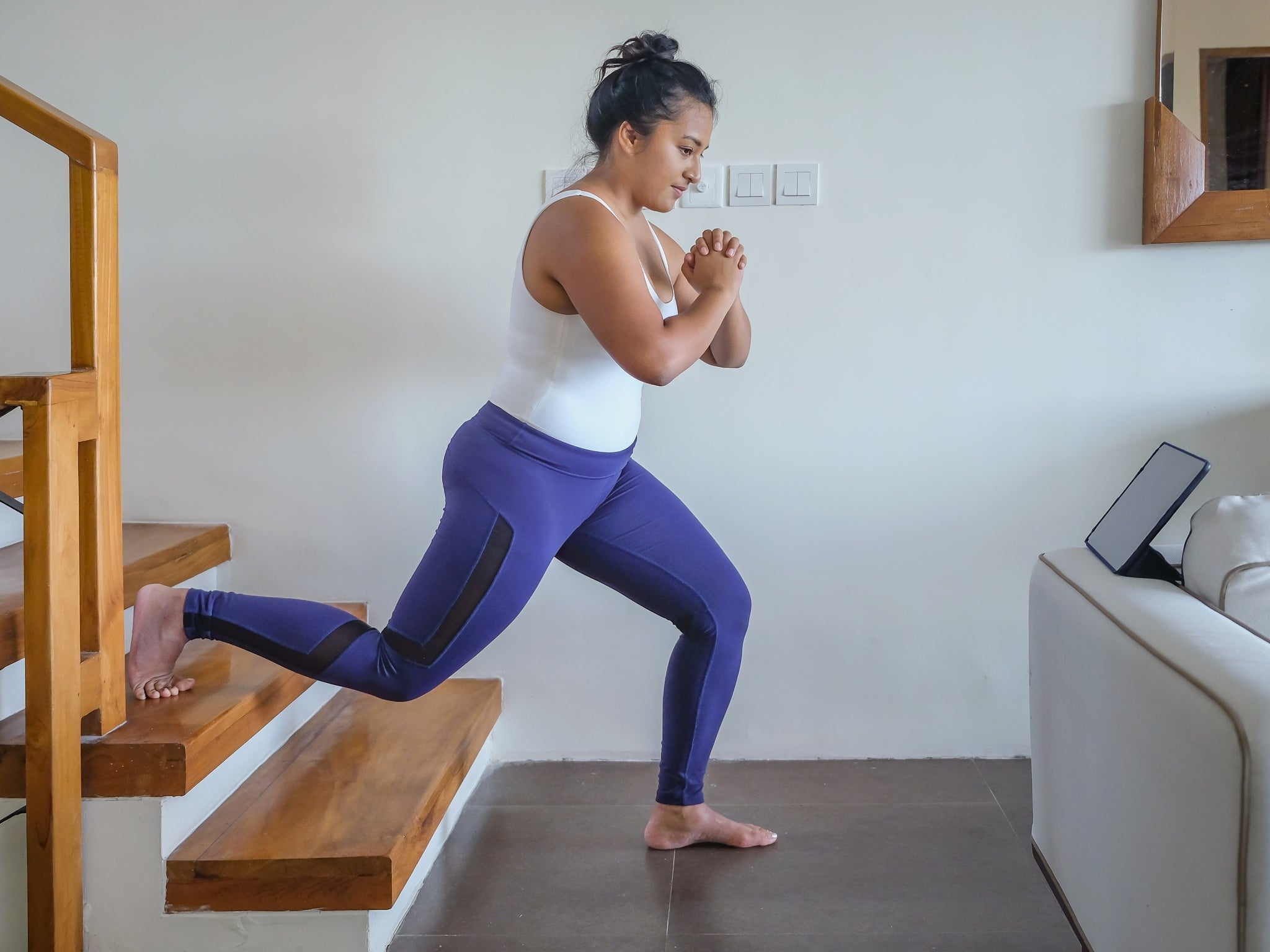I recently witnessed an online melee as people debated the best way to perform a press-up: an exercise with an instruction booklet built into its name. Sure, there are nuances you can use to manipulate muscular engagement, but for the vast majority of people, simply pressing themselves away from the ground (kneeling or otherwise) will deliver most of the benefits.
This isn’t an isolated event either. Everywhere I look, people are seeking incremental health and fitness progress through (often expensive) hacks, shortcuts and supplements, all while leaving potentially huge gains on the table by overlooking the basics.
Regular sauna sessions in lieu of a good night’s sleep, a huge stack of pills where fruit and vegetables might suffice, and some new-fangled bosu ball exercise when a simple squat would deliver more bang for your buck.
I’m not saying these things are ineffective, but for the greatest impact on your health, you’re better off laying strong foundations first. Having interviewed some of the top researchers, coaches, trainers and athletes from across the fitness industry, I’ve identified the common denominators they all recommend for general good health.
From these, I have created six accessible, expert-led and actionable tips which you can use to become fitter than the majority of the population.
Lesson one: Aim to be consistently good rather than constantly perfect
“Most of us have this mindset that more is better and we have to be absolutely perfect in everything,” says Sally Gunnell, former Olympic champion and founder of Life’s Hurdle. “But you can’t be perfect every day. That’s where exercise programmes and diets often go wrong.”
When people slip up and miss a day of their exercise plan, they often pack it all in. Failing to follow a diet’s strict rules regularly ends in a similar fate.
Gunnell likens this “all or nothing mindset” to getting a flat tyre, then slashing the other three. Instead, she recommends fixing the one that is broken by finding small ways to move your health and fitness in the right direction.

“If you miss a workout or overeat on one day, don’t throw the week away and say, ‘I’m going to start again on Monday’. Just go back to your normal [healthy] routine. Progress isn’t about perfection,” she says.
“I always think about red, amber and green days. Your green days are your good days, but often you might have a red day where you don’t feel like doing anything. On those days, is there one thing you can do that makes it an amber day?”
This might mean a short walk when you would otherwise have been scrolling on your phone, or a quick five minutes of movement (such as the short resistance training routine below) while taking a break from your desk.
A few minutes of effort might not seem significant enough to have an impact, but doing these activities regularly will quickly rack up compound interest for your fitness.
“It’s about being consistent, doing something when you can, and having a mindset where you’re not beating yourself up [if you don’t do everything perfectly],” Gunnell says. “That’s the key to long-term health and building it into your life.”
If we apply this to walking, step-based activity expert Dr Elroy Aguiar says the “ideal” baseline to hit for most health benefits is around 7,000-8,000 steps per day, with 20 to 30 minutes of walking at 100 to 130 steps per minute or faster.
However, he echoes the World Health Organisation’s sentiment that “every move counts towards better health”.
“If that means walking a little bit more quickly to your car, the train station or a bus stop, just to elevate your heart rate and your metabolic rate a little bit for those brief periods which you can accumulate throughout the day, those things count as well in terms of exercise,” Dr Aguiar says.

Lesson two: Vary your movements
Broadly speaking, the body operates on a use it or lose it basis. If you do something regularly, it will adapt to do it better. If you stop doing something, it will gradually discard the strength, mobility and cardiorespiratory fitness required to do so. Therefore, if you want to be able to move freely, moving frequently is a non-negotiable.
Top strength coach Dan John identifies the five basic human movements as push, pull, hinge, squat and loaded carry.
Movement mechanics expert Ash Grossmann also highlights the importance of moving in all three planes of motion; sagittal, meaning up, down, forward and backward motions; frontal, meaning side-to-side actions such as bending; transverse, meaning twisting or rotational movements.
If you can cover these eight bases each week, whether that’s via strength training, pilates or any other activity you favour, your body is likely to feel more supple than most.
“We want to maintain as many movement options as possible, so that means moving as many joints as possible in as many directions as possible,” says Grossmann. “Doing things like side bends and rotations will all contribute to a body that feels limber and loose.”

Lesson three: Do resistance training in some form
Resistance training is the golden goose for health, fitness and longevity, offering an invariably cheaper entry fee and far greater return on investment than most biohacking options.
“In my opinion, the benefits of maintaining healthy muscle are highly underrated,” says Well To Lead founder Ollie Thompson, a trainer who specialises in longevity. “Consistent resistance exercise enhances metabolic function by improving insulin sensitivity, supports cardiovascular health by reducing blood pressure and inflammation, helps maintain hormonal balance to combat age-related decline, preserves bone density to reduce fracture risk and strengthens the immune system to help fight off disease.”
But resistance exercise doesn’t have to mean spending an hour in the gym every day.
Your muscles don’t know the difference between a dumbbell, barbell or bodyweight workout, they just recognise the need to overcome resistance. As long as an exercise is adequately challenging, it will prompt positive adaptations to strength and size, so time-savvy home workouts will serve most people just fine. And beginners can see significant improvements from minimal input.
“This is because any type of resistance training is a new stimulus to the body,” explains Amanda Capritto, a personal trainer who specialises in minimal equipment workouts. “A previously unstimulated neuromuscular and musculoskeletal system will respond quite dramatically to lower total training volumes and less intense stimuli, compared to the more advanced lifter [who will likely require more weight, intensity and volume in their workouts to see progress].”
To prove this point, a new 2025 study published in the European Journal of Applied Physiology found that a five-minute resistance training workout comprising five beginner-friendly bodyweight exercises “significantly improved physical fitness and mental health in sedentary individuals” when performed daily for four weeks.
Fancy trying something similar? Then, every day or two, complete one round of the equipment-free circuit below:
- Knee press-up x 8-12
- Single-arm bent-over row with rucksack x 8-12 each side
- Squat x 8-12
- Suitcase carry with rucksack x 10-20m each side

Lesson four: Apply progressive overload to your training
One of the most common training mistakes is stagnation. People get stuck in a loop of doing the same exercises at the same weights for the same number of sets and reps every week.
But given the Said (specific adaptations to imposed demands) principle, in which the body only adapts to better handle the tasks we consistently ask of it, this is one-way traffic to a progress plateau. Instead, you need to gradually increase the challenge of your workouts via a process called progressive overload to continue to see benefits.
Take the five-minute workout above as a case study. For some people, it will present a challenge as written. For others, it may feel like a breeze.
If you’re in the latter camp and it requires less than a seven out of 10 effort, it’s time to increase the difficulty if you want to see progress. You can do this by performing the circuit multiple times, increasing the number of reps you perform of each exercise, increasing the weight you’re lifting (by adding items to the rucksack, and wearing it for the squats and press-ups) or switching to similar but more challenging variations of each exercise.
For example:
- Press-up x 10-15
- (Heavier) single-arm bent-over row with rucksack x10-15
- Bulgarian split squat x 10-15 each side
- Romanian deadlift with rucksack x 10-15
- (Heavier) Suitcase carry with rucksack x 20-30m each side

Lesson five: Tweak your routine to improve sleep quality
Nearly every fitness professional I’ve spoken to swears by the same first pillar for feeling better: improve your sleep. Dan Lawrence, a performance coach to elite athletes such as boxer Conor Benn, is the latest to lend weight to the argument.
“Sleep is the number one recovery tool, and it costs absolutely nothing,” he tells me. “If an athlete had a poor night’s sleep, we identify why. Have they eaten too late? Is their brain going at too fast a rate? Do we need to regulate autonomic status and breathing work? What’s gone on that’s led to poor sleep?”
The problem is, most of us aren’t elite athletes. We have early morning alarms, social commitments and unforeseen interruptions which impact our nightly slumber. However, Lawrence’s points still stand: the aim is to optimise the time we do spend in bed.
He recommends keeping your room cool and finding a sleep set-up that works for you – during Conor Benn’s training camp before his Chris Eubank Jr fight, Lawrence sprang into action after identifying a “pillow issue” which was hampering the star’s sleep.
The Sleep Scientist founder Dr Sophie Bostock also prescribes prioritising consistent sleep and wake times where possible. This will help keep you in sync with your circadian rhythm, helping your various bodily systems run smoothly.
Accessing bright natural light first thing in the morning, leaving a few hours before dinner and bedtime, and finding a way to destress before bed (such as meditation or journaling) can also improve your sleep quality.

Lesson six: Build positive nutrition habits and improve your food environment
The final step when building the base of the fitness pyramid is nutrition. But again, we’re not elite athletes, so you don’t have to weigh everything you eat and take all the fun out of food.
Instead, a few sustainable habits are likely to push the nutrition needle in the right direction, with dramatic carryovers to how you feel and perform.
“Picking some solid nutritional foundations to get better at is a good place to start, even if it’s just one or two things,” says Everything Fat Loss author Ben Carpenter. “Hopefully, they should become easier over the next few months, rather than you following a strict diet for four weeks, then stopping.”
The first foundation he recommends is “focusing on [consuming] nutritious foods rather than high-calorie, ultra-processed foods”.
“If you focus more on nutritious food, it’s building a habit rather than severing one,” he explains. “A lot of diets are focused on restriction and avoidance: you’re not allowed to eat certain things, or you have to reduce your intake of xyz.
“I like focusing on nutritious foods you can add in. They tend to have a habit of displacing other foods out of your diet because appetite is finite.”
Another thing you can do is create a favourable food environment which promotes positive nutrition choices. This can benefit everyone from office workers to elite athletes, as Manchester City Women’s physical performance lead Dan McPartlan explains.
“The eating environment is really important; trying to make the right foods appealing to the players, and buying food that they really want to eat.
“We’ve had a big focus on post-match food over the last few years. When I first arrived, we had little boxes of food that we would put in the microwave at the back of the bus after a game. We now have one of the chefs from the academy who travels with us, and he will cook fresh pasta at the back of the bus.”
If a private pasta specialist isn’t an option, Carpenter says there are easier ways to achieve this.
Try keeping nutritious food options in more accessible spots than less nutritious options. For example, boiled eggs instead of snack bars or fruit on your desk, rather than a communal high-calorie treats like biscuits.
It’s far from a straight swap, granted, but you’re more likely to make positive choices if it is easier to do so.

